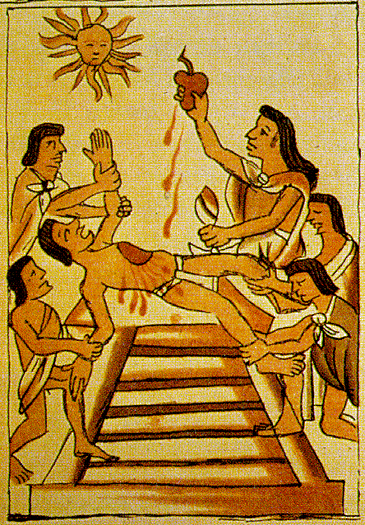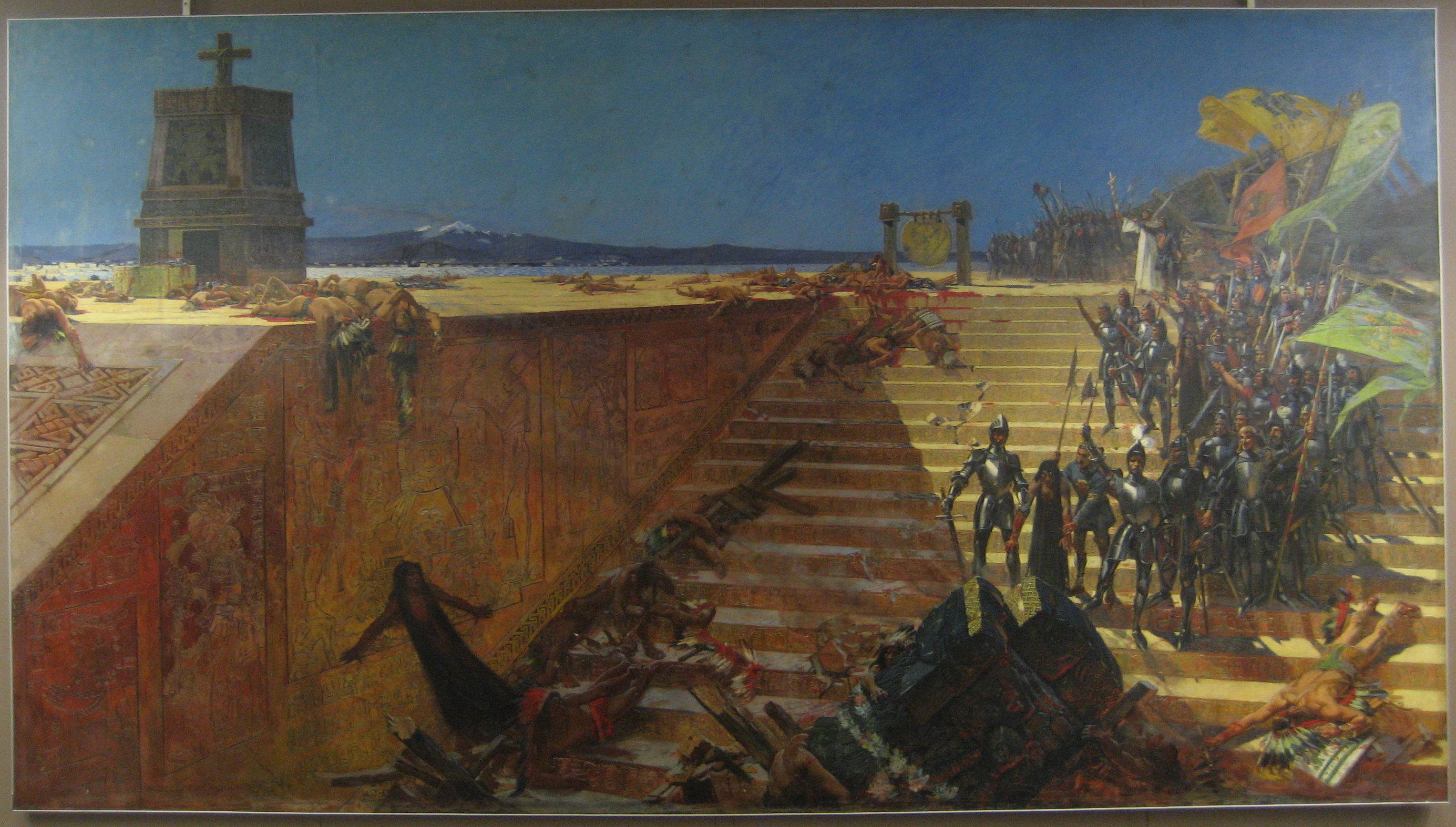
The Mexica
The Mexica were latecomers to the valley of Mexico. They were from the Chichimec culture and spoke Nahuatl. They arrived from Atzlan in 1200 A.D and found most of the land occupied by an agricultural-based culture that lived near well-developed cities.

The Mexica’s New Home
After they sacrified the Culhea king’s daughter, The Mexica were punished and were forced to leave the land. They’ve been wondering in the wilderness for years, but their warrior god Huitzilopochtli led them to an island in a swamp. The Mexica drained the swamp and started building an urban center, which is known as the Aztec capitol of Tenochtitlan.

Itzcoatl
He became one of six Aztec emperors. He drove the expansion of the empire for almost a century when he introduced revolutionary changes. The defeated Tepanecs’ were distributed to the warior elite. Common people owed Itzcoatl, his warriors, and other nobles tribute, labor and miltary service.

Huitzilopochtil represented the sun god, Tonatiuh and the Atzecs were now known as the “chosen people of the sun.” The Mexica king Itzcoatl gave the Atzecs the responcibility to keep the gods and the world alive with a supply of human blood. To satifiy Tonatiuh, they needed to bring a larger number of captives and continue the human sacrifices as part of their religion.

How the Empire Worked
Itzcoatl’s plan was to conquer other Aztec city-states in the Valley of Mexico with the Triple Alliance. Noble warriors gained wealth and status based on how many captives they took when the Triple Alliance are pressed into war. They fought to kill , but they fought to take in captives, so Noble warriors can obtain wealth and status.

The Noble Warriors
After they defeated a city-state, Itzcoatl makes a trustworthy noble its new king of that city-state. The new king really doesn’t change anything as long as the tribute goes to the Aztec capitol. But when the original city-state is conquered, they could conquer their city-state back from the new king.

People gave the warriors new uniforms, building materials, pottery, and more items to show their tribute. Gold and copper and other items were required from conquered city-states to the Aztecs so they could make easy money from it. Laborers from conquered city-states were made to build temples, aqueducts, and other public projects.

Moctezuma I
After Itzcoatl’s death in 1440, a group of Mexica royal advisers chose Moctezuma I . To become the next Aztec leader. A nephew and close ally of the former ruler, Moctezuma II carried on Itzcoatl’s warlike policies. Moctezuma I made the tribe system more stronger. Moctezuma I began to made a Great Temple of Tenochtitlan.
.jpg/180557781/563x333/Aztec_pyramids_(at_Tenochtitlan).jpg)
Moctezuma I made every Mexica boy and girl go to school, so the boys would become:priests, government office holders, merchants, farmers, and craftsmen. All the boys were trained to become warriors and the girls learned how to sing and dance and the skill to become a mother of an Aztec warrior.

Moctezuma II
Moctezuma II became the sixth and last emperor, the empire was going downhill and becoming weaker. He was paying too much attention on conquering city-states that had revolted against demands from the capitol. The Mexica denied any decision making from the commoners. That caused the commoners to lose their faith to the rulers of Aztec.

Cortes
Cortes was amazed by the island city filled with 200,000 people with great houses, stone temples, and royal palaces. The interesting thing is that The Mexica hid their weaknesses from the Spanish. Cortes found out that he could enlist the aid of other resentful Aztec city-states to defeat the “people of the sun”

The Fall
Cortes gathered a large enough army to attack the Aztec Empire. Cortes and his army surounded the island in 1521 and fought for 85 days. The estimated deaths of the Aztecs was 100,000 lives. The capitol of the Aztec Empire have been engolfed by the streets and buildings of Mexico City.
Published: Nov 5, 2015
Latest Revision: Nov 10, 2015
Ourboox Unique Identifier: OB-75012
Copyright © 2015








